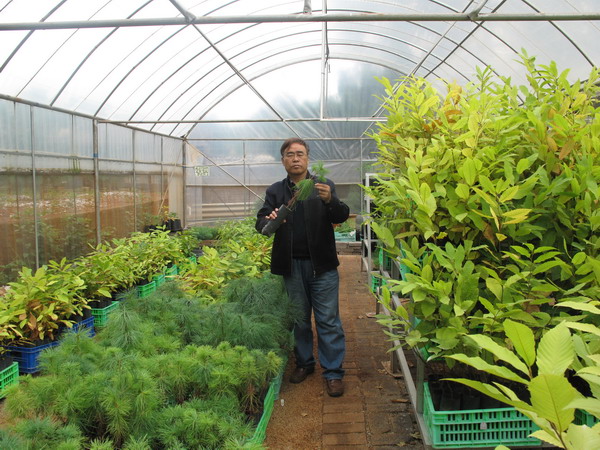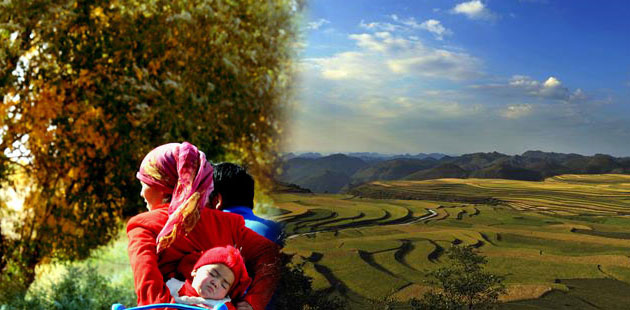Threat to truffles leaves a bad taste
Updated: 2011-11-03 07:40
By Yang Wanli (China Daily)
|
|||||||||
They need each other
Liu described the situation this way:
Eighty percent of mushrooms have a symbiotic relationship with a certain plant. Truffles, for example, usually grow with chestnut, pine or hazel trees. Unlike plants with roots, truffles start from spores, which play the role of their seeds. Spores produce hyphae that will later infect the root of its "partner tree". Hyphae are nourished by the tree and later grow into truffles.
After they have successfully infected the root, hyphae need four or five years to grow into truffles. If mature truffles are collected without hurting the hyphae, new truffles will grow next year.
"It is not a unilateral benefit. Truffles produce enzymes that will break down nutritive material. Then the partner trees will grow better," Liu said.
"Only mature spores are able to produce new generations. Premature gathering will not only bring down the price of truffles but also break the chain of their reproduction."
What is more worrisome is the rough manner in which Yunnan truffles are harvested. The hoes and iron-toothed rakes that local farmers use to dig out truffles - instead of gather them - destroy hyphae under the surface. Without hyphae that connect to trees, truffles can no longer grow.
'They don't know'
One of the biggest truffle companies in the province has struggled with farmers for years over their gathering methods. Feng Yongmin, manager of Yunnan Truffle Technical Co, said he bought what is called usufruct - the right to use the natural resources, such as mushrooms - on a mountain rich in truffles but he couldn't stop local farmers from gathering them secretly.
"What really makes me feel depressed and helpless is that farmers dig the earth again and again for those low-price, premature truffles. They don't know that this way of gathering will neither bring them big profits this year nor new truffles next year," Feng said.
Truffle gatherers are called hunters because they traditionally use a pig or a dog to sniff out this precious food hidden underground. But on Feng's mountain in Dabanqiao town of Kunming, Yunnan, farmers use hoes and random digging to find truffles.
"We came to find truffles in July every year and truffle selling could be found in the market five or six years ago," said Liu Xiulian, 45, who lives in Gaoshitou village, Dabanqiao county. She came with her younger sister and a male villager. After searching for an hour, they found only two truffles no bigger than a thumbnail.
She said those small truffles would sell for about 100 yuan a kg. Even with such a low price, there is fierce competition among hunters, including some from townships 200 kilometers away. "They take coaches to Dabanqiao and rent a room to stay. Their iron-toothed rakes are strong, to make deeper digs.
"It's a great business," Liu said. "We earn about 10,000 yuan every year spending just six or seven months collecting truffles. No investment, no cultivation, and easy gathering can bring us double the income we would get growing crops."
Five years ago, she said, truffles could be found in shallow ground and dug out easily by hand. But now, the roots of pine trees are exposed because of the digging, and most places where truffles would grow are covered by loose red soil. "But even if we don't hunt before the mature season, other people will," she said.
"Truffles will never grow here again," the truffle company's Feng said. He can't build a fence to protect his area, about 200 hectares, and there are no regulations to protect truffles.
Model protection
|
 Liu Peigui, a researcher at Kunming Institute of Botany, tends to trees he has infected with truffle hyphae in hope truffles will grow. The fungus' future is at risk, and Liu appealed to the Yunnan government in 2009 to enact laws on the gathering of truffles, but to no avail. He said, "We need more support from the government." [Photo by Yang Wanli/China Daily]
|
A method that successfully protected another kind of mushroom - matsutake - in Nanhua county might work.
Matsutake mushrooms have sold well since the 1980s to Japan, where they are thought to prevent cancer. The price in Yunnan hit 3,000 yuan a kg in 2002, but the average last year was 1,000 yuan. Before 1980, it was 10 yuan a kg.
As one of the areas of Yunnan rich in matsutake, Nanhua sustained damage from overeager harvesting similar to that seen now with truffles. But local government took action in 2002, requiring farmers to sign contracts to obtain the right to gather matsutake.
"Every family 'owns' a certain area of forest," said Yang Yihua, director of the forestry technology department at Chuxiong Institute of Forestry Sciences. "We also give lectures to family leaders three or more times a year, telling them how to protect mushrooms and, at the same time, to increase production."
Wujie town has promoted such contracts since 2002. In Kaimen, one of its nine villages participating in the plan, 77 families benefit from the contracts. Production of matsutake was 14 tons in 2001 but had jumped to 45 tons by 2005.
"Every family made marks on the trees in their forest," Yang said. "And they no longer gather premature matsutake, instead taking time to let them grow bigger. Some even pitch camps near the mushrooms. It is worthy that a three-person family earns more than 20,000 yuan a year just by gathering matsutake. Now, local farmers even know to drop over-mature mushrooms, helping them to spread their spores.
"I think this mode can be adopted to protect other high-value mushrooms, such as truffles," she said. "But it needs support in terms of both policy and education."
A helping hand
Botanist Liu has spent 10 years researching artificial production of truffles at Kunming Institute He said the special relationship between trees and truffles inspired him.
In a glass greenhouse covering 100 square meters, saplings are infected by truffle hyphae and are moved outside six months later. The first chestnut and pine trees that stand outside are now about 2 meters tall.
"They are 4 years old it will be time to see the result next year," Liu said while pulling up some weeds near the trees. "People always asking me whether the artificial growing will succeed or not. I tell them, only if you believe in science."











